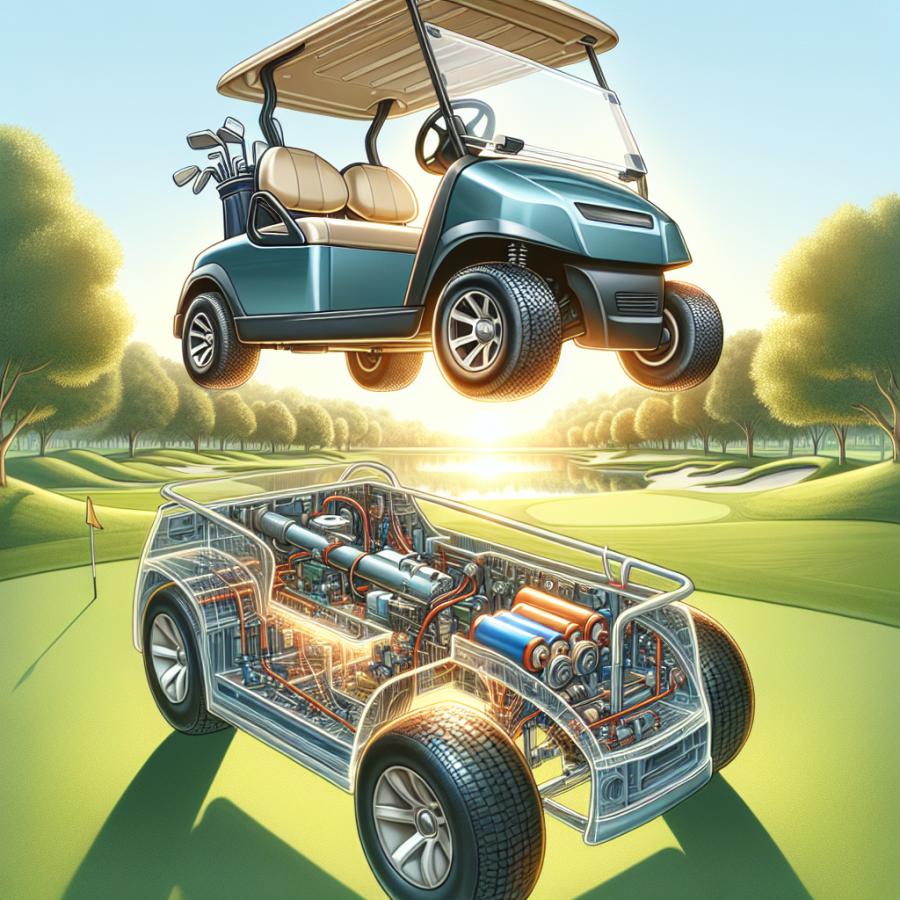Powering the Ride: The Role of Battery and Motor in Golf Carts
When it comes to understanding the mechanics of a golf cart, none of the processes are possible without the power supplied by the key components – the battery and the motor.
The Battery: Fuel for the Journey
Unlike cars running on gasoline, golf carts are typically battery-operated, making them more eco-friendly. The battery plays a pivotal role, as it provides the required energy for the cart to move. Golf cart batteries are usually deep-cycle lead-acid batteries, designed to discharge a significant portion of their stored energy over a longer period of time.
Here, the concept of voltage comes into play. The higher the voltage, the more potential the cart has to travel at higher speeds or carry heavy loads. A standard golf cart battery typically offers 36 or 48 volts. To get this, several 6 or 12-volts batteries are linked together in a series.
The complexity of a golf cart's operation is also influenced by the battery's capacity, often measured in Ampere-hours (AH). The larger the capacity, the longer your golf cart can run before the battery needs to be recharged.
However, maintaining these batteries is paramount. If not properly cared for, they can fail prematurely. This includes regular cleaning, ensuring they’re securely fastened, and that connections are not corroded. Knowing the correct time to recharge golf cart batteries is crucial too. It is generally recommended to recharge the batteries when they have discharged to 30 to 50% of their capacity.
The Motor: The Driving Force
Once the battery supplies power, the motor puts it to work. The motor takes electrical energy from the battery and converts it into mechanical energy, which is then used to power the wheels and move the cart forward.
There are two types of motors commonly used in golf carts – series wound and separately excited, or SepEx motors. Series wound motors are simple and hardy, able to handle heavy duty work. SepEx motors, on the other hand, provide higher efficiency with speed control but are more complex in terms of electronic systems.
Golf cart motors are not one-size-fits-all. The type and size vary based on several factors, including the make and model of the cart, the voltage supplied by the battery system and the desired speed or torque.
In summary, both the battery and the motor are essential in powering the golf cart. While the battery supplies the energy, the motor works to convert this energy into motion.
Read also:
The Thrill and Challenges of Competitive Sports
The Inner Workings of Golf Carts: Breaking Down Main Components
Golf carts are not just limited to the course anymore; they are used in various industries from hospitality, to logistics and sometimes for personal transportation in gated communities. Just like any vehicle, the performance and functionality of a golf cart depend on its structural integrity and mechanical compositions. Understanding these components not only keeps you better informed but can save you time and money on maintenance and repairs.
The centerpiece of any golf cart, whether gas or electric, is the motor. In gas-powered carts, the motor operates in a similar manner to conventional cars. When the gas pedal is depressed, it sets off a chain reaction - activating the engine, engaging the clutch, and ultimately making the wheels turn. The difference is, golf carts run on a smaller scale – usually having only about 10-20 horsepower. On the other hand, electric golf cart motors function slightly differently. They contain an electric motor and a controller that regulates power distribution, both drawing energy from an on-board battery pack.
Next is the power source. For gas golf carts, it's the gas tank, which typically holds between five and six gallons of fuel. Meanwhile, electric golf carts draw power from a battery pack, which is typically comprised of four to six 12-volt lead-acid batteries wired together. The batteries must be recharged after every round of golf or every 10-20 miles of driving.
Then there are the wheels and tires, which greatly contribute to the golf cart’s performance and efficiency. Golf carts typically use golf-specific tires, which are not designed to bear heavy loads but are optimal for moving swiftly on turf without causing significant damage. The rims of the wheel often have a smaller diameter, usually under 10 inches (although there are ‘lifted’ golf carts with larger tires).
The electrical system is another essential part. In gas-powered golf carts, it includes components such as the starter, ignition, head and tail lights, and often a voltage reducer to accommodate aftermarket accessories. In electric carts, it also includes the controller, solenoid, and forward/reverse switch, which directs the flow of energy from the batteries to the golf cart motor.
Lastly, both gas and electric golf carts include functional components like the body (usually made of sheet metal or fiberglass), the seats and canopy, brakes, steering system, suspension, and other optional features like windshields, mirrors, and bag holders.




